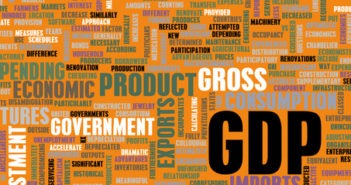- The second release of US GDP is expected to show a small downgrade.
- Changes in the composition of growth will be of interest.
- A drop below 4% annualized will inflict some political damage but is unlikely to derail the Fed.
The US releases the second version of Q2 GDP on Wednesday, August 29th, at 12:30 GMT. The first read came out at a growth rate of 4.1% annualized, the fastest clip in four years. US President Donald Trump took a victory lap on the robust rate of growth.
Part of the elevated growth rate is due to Chinese importers rushing to purchase US goods before China’s counter-tariffs kicked in. Another part of the acceleration is due to other reasons. The second release is expected to show a modest downgrade to 4.0%. A minor change will keep the focus on the components of growth.
Exports may be too good
If exports had an even more substantial part in the growth story, markets may think that it is a one-off and reinforce the theory that Q2 was mostly due to the tariffs and that Q3 will be a “payback quarter” in which growth will be dragged down by exports.
However, if the Personal Consumption component plays a more substantial part in growth, it will be a bullish sign for the economy.
Another component to watch is inventories. Any considerable contribution will be frowned upon, as inventories may be depleted in Q3.
If GDP growth beats expectations and enjoys an upgrade above 4.1%, it will be good news for the US Dollar. A small disappointment would be an expansion rate of 3.9%. That would be below 4%, a political blow to President Trump that had already celebrated.
Fed unmoved for now, but the dollar will shake
However, it will not change the trajectory of the Federal Reserve.
The Fed is on course to raise interest rates in its September 26th meeting. Only a highly improbable collapse to sub 3% annualized could cause the Fed to rethink. However, any change in growth could impact the central bank.
Fed Chair Jerome Powell conditioned further rate hikes on ongoing growth in the economy and in jobs. He also said he did not see any overheating of the economy. An upgrade of GDP data could push the greenback higher as markets will expect the Fed to see an overheating of the economy. And if the economy overheats, the Fed will overcompensate with increasing interest rates beyond what markets expect.
On the other hand, if Powell’s conditions are not met, the central bank may pause later on. In such a scenario, the greenback will lose ground even if the September hike is not in danger.
Conclusion
The second publication of GDP growth may not be as critical as the first release, but any change could change the trajectory of the Fedbeyond September. Moreover, the components of growth make a difference. A higher share for exports would cause doubts while elevated consumption would be welcome.
More: Is the US economy peaking out? Too many indicators are going in the wrong direction
Get the 5 most predictable currency pairs
